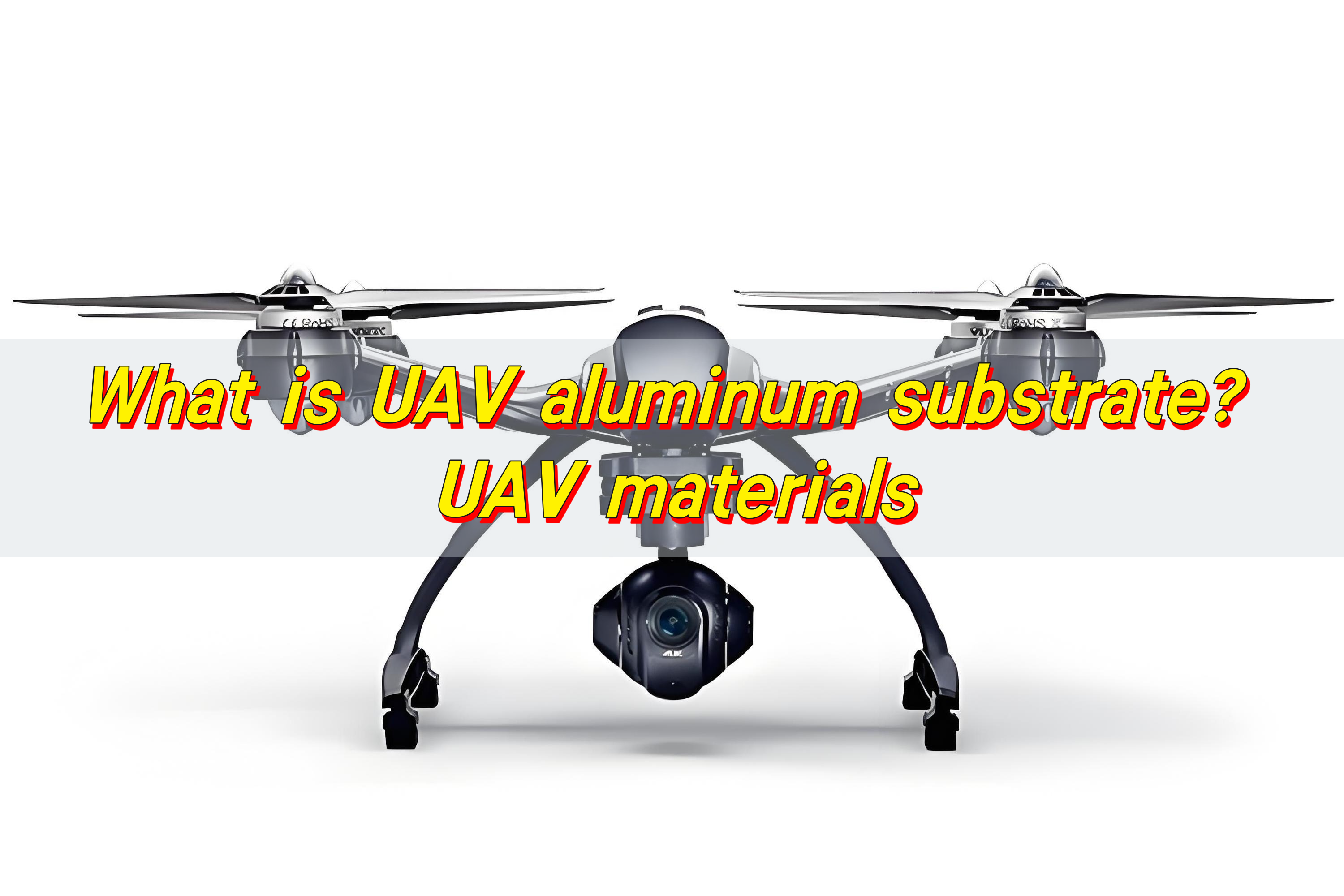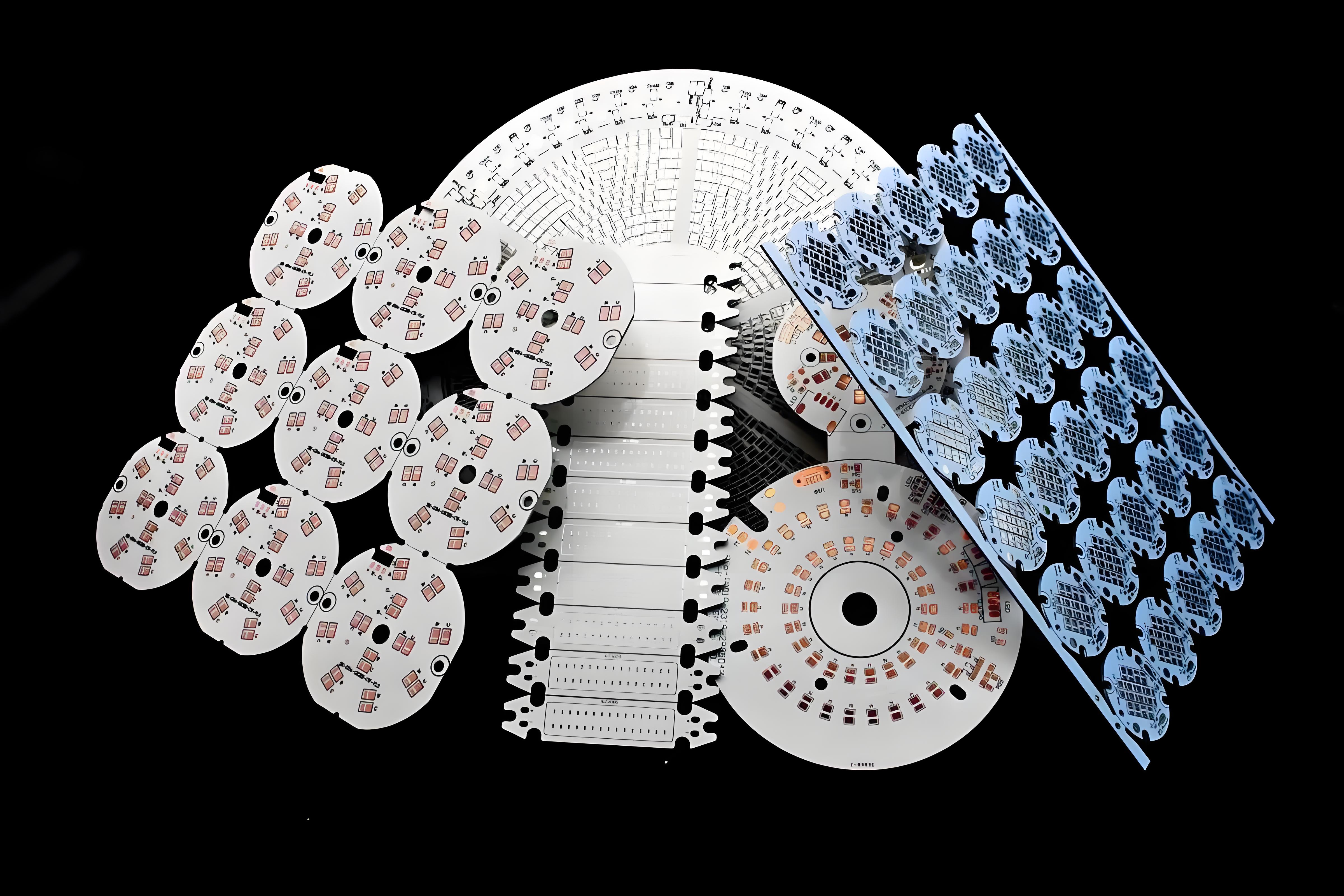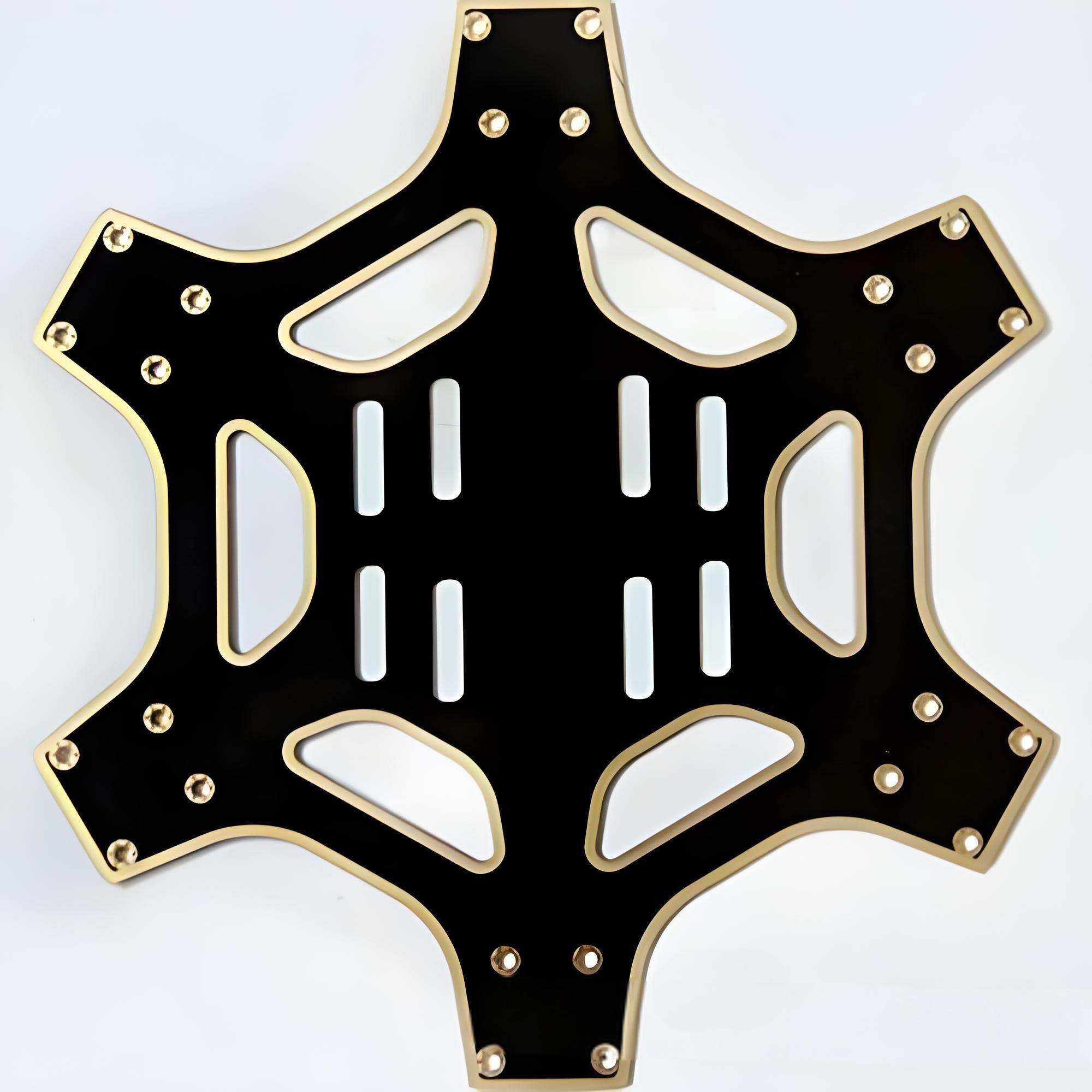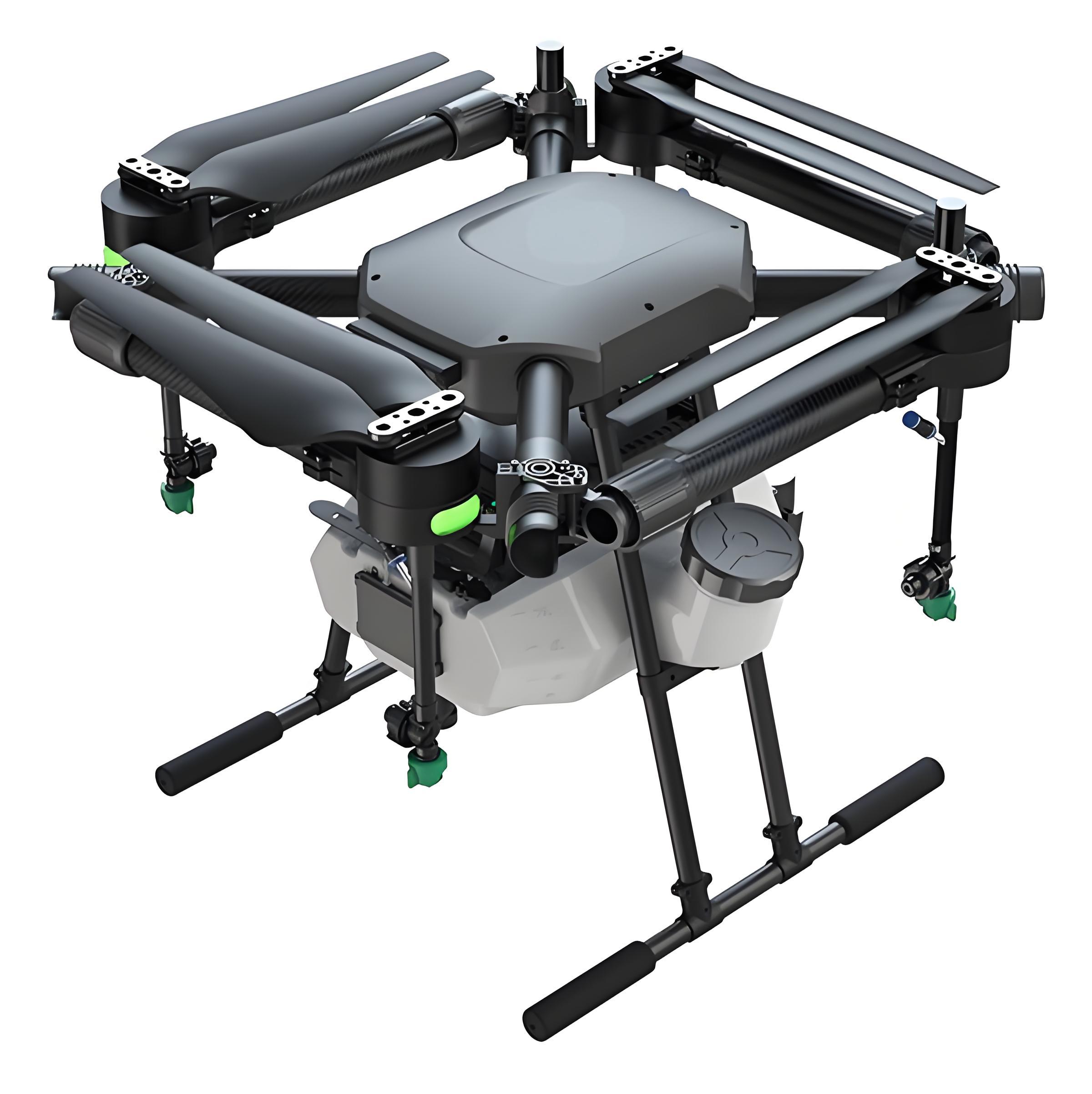UAV aluminum substrate is a lightweight circuit board composed of a high-thermal-conductivity aluminum alloy substrate, copper-clad circuitry, and an insulating dielectric layer. It can rapidly dissipate heat from flight control chips and power devices with a thermal conductivity exceeding 1.5 W/m·K. It is 30% lighter than traditional FR-4 boards and is resistant to 20g vibration and temperature fluctuations from -40°C to 85°C, providing reliable heat dissipation and structural support for the high power density and long flight time requirements of UAVs.
Are you concerned about the following issues when using aluminum substrates in UAVs?
- UAVs are weight-sensitive. Will aluminum substrates be too heavy?
- The motors/power modules generate a lot of heat; can they keep up with the heat dissipation?
- Will the substrate be easily damaged by the high vibration and impact during flight?
- Is bulk purchasing expensive? Can custom sizes be made?
- Is it environmentally compliant? Is it easy to recycle?
At BEST Technology, we can easily address your concerns:
We use high-purity, lightweight aluminum with a density of only 2.7g/cm³, 65% lighter than traditional steel substrates. This balance of strength and weight reduction makes it perfectly suited to UAV endurance requirements.
The aluminum substrate has a thermal conductivity of 1-3 W/(m·K), 3-10 times that of ordinary FR4 substrates. The insulation layer is made of a highly thermally conductive epoxy resin, allowing heat to be transferred directly to the aluminum substrate and quickly dissipated, preventing component overheating and failure.
The aluminum substrate provides high mechanical strength, resistance to bending and vibration, and, combined with a specialized insulation layer process, ensures stable circuit connections under complex operating conditions, with a failure rate below 0.5%.
Standardized production reduces costs, with prices as low as one-third those of ceramic substrates. Customization is available in thicknesses from 0.3-3mm and any size, with rapid 7-day proofing and short lead times for mass production.
The entire process is RoHS/WEEE compliant, the aluminum is 100% recyclable, and processing produces no toxic emissions, ensuring regulatory compliance while contributing to sustainable development.
What is the aluminum substrate definition in PCB manufacturing?
In printed circuit board (PCB) manufacturing, an aluminum substrate refers to a PCB base material where a layer of aluminum replaces the conventional fiberglass or epoxy base. This type of substrate uses aluminum as the core to provide high thermal conductivity, excellent mechanical stability, and improved heat dissipation.
It is often called an aluminum substrate PCB or metal-based PCB. The aluminum core is laminated with an insulating dielectric layer and a copper circuit layer on top.
In UAV (unmanned aerial vehicle) applications, aluminum substrates have gained recognition for their ability to handle high thermal loads from compact electronic systems. These substrates offer a balanced combination of electrical performance and mechanical durability, which is essential in airborne environments.
Why are aluminum substrates ideal for UAV materials?
UAVs require lightweight, strong, and thermally efficient materials. Aluminum substrates check all these boxes.
- First, aluminum has an excellent strength-to-weight ratio. This allows UAV designers to reduce overall weight while maintaining durability.
- Second, UAV electronics generate heat during operation, especially in high-performance drones used for mapping, surveillance, or industrial inspections. Aluminum substrates dissipate this heat faster than traditional materials. This protects sensitive components from overheating, extending operational life and maintaining stable performance.
- Third, aluminum resists corrosion when treated with protective coatings, which is important for UAVs that operate in various weather conditions.
What are the characteristics of a UAV aluminum substrate?
UAV aluminum substrates offer numerous advantages and are widely used in UAV applications.
- Excellent heat dissipation: Aluminum has a high thermal conductivity, and aluminum substrates incorporate a built-in metal “heat dissipation layer.” This thermal conductivity is typically 1-3 W/(m・K), 3-10 times that of standard FR4 substrates (0.3 W/(m・K)). This allows for rapid heat dissipation from high-power components in UAVs, such as motor drive modules and batteries, preventing component degradation or damage due to overheating and extending the lifespan of the device.
- Lightweight: Aluminum has a low density of only 2.7 g/cm³, making it 65% lighter than steel for the same size. Using aluminum substrates can effectively reduce the overall weight of a UAV, significantly improving its flight range, flight maneuverability, and payload capacity. Aluminum substrates are particularly suitable for weight-sensitive lightweight UAVs and FPV racing UAVs.
- High Mechanical Strength: The aluminum layer imparts high mechanical strength and strong bending resistance to the substrate. During UAV flight, it can withstand certain vibrations and shocks without deformation or damage, ensuring stable connections between components on the circuit board and enhancing the UAV’s reliability and durability.
- Excellent Electromagnetic Shielding: The aluminum layer absorbs and shields electromagnetic interference, reducing signal crosstalk between circuits and improving the UAV’s circuit system’s anti-interference capabilities. This ensures stable transmission of flight control and communication signals, enabling the UAV to operate normally even in complex electromagnetic environments.
- Manageable Costs: Compared to some high-performance but expensive substrate materials, such as ceramic substrates, aluminum substrates are more affordable. The processing technology is similar to that of ordinary PCBs, making them suitable for large-scale production. This ensures UAV performance while effectively controlling production costs.
- Environmentally Friendly and Energy-Saving: Aluminum is 100% recyclable, and the processing process produces no toxic substances, complying with environmental regulations (RoHS/WEEE) and contributing to sustainable development.
What is the structure of a UAV aluminum substrate?
UAV aluminum substrate consists primarily of three layers: a metal aluminum base layer, an insulating layer, and a conductive layer.
The metal aluminum base layer is the main component of the substrate, providing excellent thermal conductivity and mechanical support. The insulating layer, typically made of materials such as epoxy resin and ceramic, separates the conductive layer from the aluminum base layer, ensuring electrical insulation. The conductive layer, typically made of copper foil, provides circuit connections and signal transmission.
What is the principle behind a UAV aluminum substrate?
When a UAV is operating, the components in the circuit generate heat. This heat is first transferred to the copper foil of the conductive layer, then conducted through the insulating layer to the aluminum substrate, where it is finally dissipated into the surrounding environment.
In this way, the aluminum substrate effectively conducts heat away from the heat-generating components, achieving heat dissipation and ensuring stable operation of the UAV circuit system.
How is an aluminum substrate PCB made for UAV applications?
Manufacturing a UAV aluminum substrate PCB involves several precise steps:
- Material preparation: The aluminum base is cut and cleaned to remove impurities.
- Dielectric layer lamination: A thermally conductive yet electrically insulating layer is applied over the aluminum.
- Copper foil bonding: Copper is laminated on top of the dielectric layer.
- Circuit patterning: Photolithography and etching are used to create the desired circuit paths.
- Surface treatment: Protective coatings like HASL, ENIG, or OSP are applied to enhance solderability and prevent oxidation.
- Drilling and routing: Holes for components and mounting points are drilled, followed by final shaping.
- Inspection and testing: The PCB undergoes thermal, electrical, and mechanical testing to ensure it meets UAV performance standards.
These steps require tight quality control because UAV applications demand both high reliability and precise tolerances.
How does an aluminum substrate PCB improve UAV performance?
Aluminum substrate PCBs enhance UAV performance in several ways:
- Heat management: Efficient thermal dissipation keeps electronics cool, ensuring stable flight operations even in hot climates.
- Weight Optimization: By using aluminum, weight can be reduced without sacrificing strength, thereby extending flight time.
- Reliability in harsh conditions: The aluminum core withstands vibration, temperature swings, and mechanical shocks better than standard FR4 boards.
- Compact design: With built-in heat dissipation, there’s less need for large cooling systems, freeing up space for sensors or payload.
- Energy efficiency: Stable operating temperatures reduce energy loss in electronics, indirectly improving battery efficiency.
The result is a UAV that performs better, lasts longer, and remains reliable across diverse missions.
What are the applications of a UAV aluminum substrate?
- UAV motor driver module: UAV motors generate significant heat during operation. The excellent heat dissipation performance of aluminum substrates ensures that components such as the motor driver chip operate within a normal temperature range, improving motor efficiency and reliability while also extending the lifespan of the motor and driver module.
- FPV racing UAVs: FPV racing UAVs have extremely high weight and performance requirements. Aluminum substrates can reduce weight while meeting the heat dissipation requirements of high-speed flight and high-load operation, helping to improve flight speed and controllability.
- UAV power systems: These include battery management circuits, power conversion modules, and other components. These components also generate significant heat during operation. Using aluminum substrates effectively dissipates heat, ensuring stable output from the power system and improving the UAV’s flight endurance and overall performance.
Conclusion:
UAV aluminum substrates combine the strengths of aluminum with the precision of PCB manufacturing. Whether in photography, industrial inspection, or military use, these substrates provide a dependable foundation for advanced electronics.
BEST Technology specializes in manufacturing different types of aluminum substrates. For inquiries or to discuss UAV aluminum substrate solutions, contact sales@bestpcbs.com






